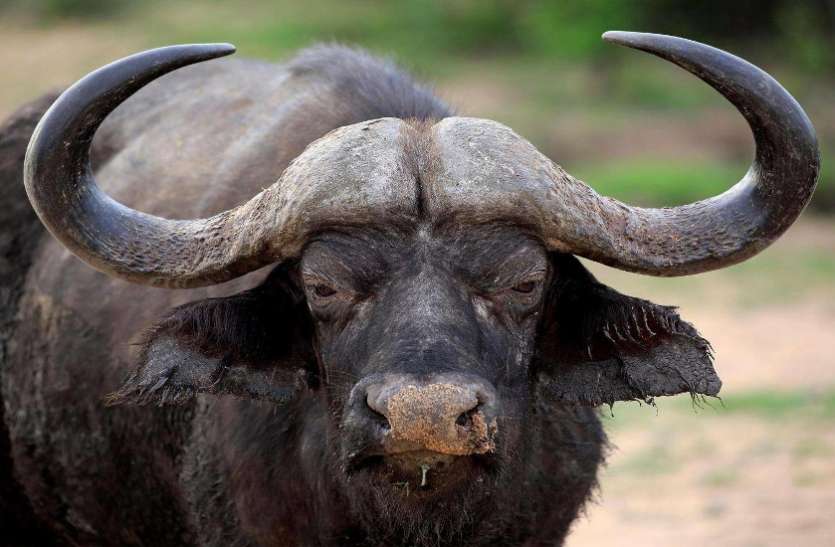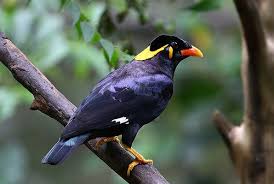Indravati National Park
Indravati National Park is the finest and most famous wildlife parks of Chhattisgarh. Also the only Tiger Reserve in the state, Indravati National Park is located in Dantewada district of Chhattisgarh. The Park derives its name from the Indravati River, which flows from east to west and forms the northern boundary of the reserve with the Indian state of Maharashtra. With a total area of approximately 2799.08 sq kms, Indravati attained the status of a National Park in 1981 and a Tiger Reserve in 1983 under the famous Project Tiger of India to become one of the most famous tiger reserves of India.
The flora in the Indravati National Park mainly comprises tropical moist and dry deciduous type with predominance of the Sal, Teak and Bamboo trees. The most commonly found trees in the park are Teak, Lendia, Salai, Mahua, Tendu, Semal, Haldu, Ber and Jamun. The major wildlife in Indravati National Park include the endangered Wild Buffalos, Barasinghas, Leopards, Gaurs (Indian Bison), Nilgai, Sambar, Chausingha (fourhorned Antelope), Sloth Bear, Dhole (Wild Dog), Striped Hyena, Muntjac, Wild Boar, Flying Squirrel, Porcupine, Pangolins, Monkeys and Langurs among many others. The commonly found reptiles in the park are Freshwater Crocodile, Monitor Lizard, Indian Chameleon, Common Krait, Indian Rock Python, Cobra and Russells Viper to name a few. The Park also gives shelter to the large variety of birds of which Hill Maina is the most important species here.
Barnawapara Sanctuary
Located in the northern part of Mahasamund district of Chhattisgarh, Barnawapara Wildlife Sanctuary is one of the finest and important wildlife sanctuaries in the region. Established in 1976 under Wildlife Protection Act of 1972, the sanctuary is relatively a small one covering an area of only 245 sq kms. The topography of the region comprises flat and hilly terrain with altitudes ranging between 265-400 mts. The Barnawapara Wildlife Sanctuary is known for its lush green vegetations and unique wildlife
The flora of Barnawapara Wildlife Sanctuary chiefly comprises of tropical dry deciduous forest with Teak, Sal, Bamboo and Terminalia being the prominent trees. Other major plants found in the sanctuary include Semal, Mahua, Ber and Tendu. The rich and lush vegetation cover supports a wide variety of wildlife in the sanctuary. The major wildlife of the Barnawapara Sanctuary include Sloth Bear, Flying Squirrels, Jackals, Fourhorned Antelopes, Leopards, Chinkara, Black Buck, Jungle Cat, Barking Deer, Porcupine, Monkey, Bison, Striped Hyena, Wild Dogs, Chital, Sambar, Nilgai, Gaur, Muntjac, Wild Boar, Cobra, Python to name a few. The sanctuary also has a sizable bird population with prominent being the Parrots, Bulbul, White-rumped Vultures, Green Avadavat, Lesser Kestrels, Peafowl, Wood Peckers, Racket-tailed Drongos, Egrets, and Herons to name few.
Its open forest serves as habitat of a number of wild animals such as Leopard, Hyena, Fox, Bear, Cheetal, Wild Buffalo, Nilgai etc. Bhoramdeo wildlife sanctuary encompasses mixed vegetation comprising normally of sal, saja, teinsa, kara, haldu species.
Sitanadi Sanctuary
Located in Dhamtari district of Chhattisgarh, Sitanadi Wildlife Sanctuary is one of the most famous and important wildlife sanctuaries in central India. Established in 1974 under Wildlife Protection Act of 1972, the sanctuary covers an area of approximately 556 sq kms, comprising of highly undulating and hilly terrain with altitudes ranging between 327-736 mts. The beautiful sanctuary derives its name from the Sitanadi river that originates in the middle of sanctuary and joins Mahanadi river near Deokhut. Sitanadi Wildlife Sanctuary is known for its lush green flora and rich and unique and diverse fauna and has great potential to emerge as one of the finest wildlife destinations in central India.
The flora in Sitanadi Wildlife Sanctuary chiefly comprises moist peninsular Sal, Teak and Bamboo forests. Other major plants in the sanctuary include Semal, Mahua, Harra, Ber and Tendu. The major wildlife found in Sitanadi Sanctuary include Leopards, Flying Squirrels, Jackals, Four-horned Antelopes, Chinkara, Black Buck, Jungle Cat, Barking Deer, Porcupine, Monkey, Bison, Striped Hyena, Sloth Bear, Wild Dogs, Chital, Sambar, Nilgai, Gaur, Muntjac, Wild Boar, Cobra, Python among many others. The sanctuary also has a sizable bird population with prominent being the Parrots, Bulbul, Peafowl, Pheasant, Crimson Breasted Barbet, Teetar, Tree Pie, Racket-tailed Drongos, Egrets, and Herons to name few.
Udanti Sanctuary
Udanti Wildlife Sanctuary is a small but an important wildlife sanctuary in the region. Established in 1983 under Wildlife Protection Act of 1972, the sanctuary covers an area of approximately 232 sq km. the topography of the sanctuary comprises broken mass of land traversed by innumerable hill ranges intercepted by stripes of plains. The beautiful sanctuary derives its name from the Udanti river flowing from the west to east covering major part of the sanctuary. Udanti Wildlife Sanctuary is famous for its population of the endangered Wild Buffalos.
The flora in Udanti Wildlife Sanctuary chiefly comprises of Tropical Dry Peninsular Sal forests and Southern Tropical Dry Deciduous Mixed Forests. Major flora in the sanctuary comprises of Teak, Sal, Salai, Bamboo, Mahul, Semal, Mahua, Aonwla, Tendu, Harra and Ber among others. The wildlife found in Udanti Sanctuary include Wild Buffalos, Panthers, Tigers, Chital, Four-horned Antelopes, Chinkara, Black Buck, Sambar, Nilgai, Jungle cat, Barking Deer, Sloth bear, Gaur, Wild dog, Porcupine, Monkey, Jackals, Bison, Striped Hyena, Fox, Cobras, Pythons etc. The sanctuary also has a sizable population of birds with prominent being the Parrots, Bulbul, Peafowl, Racket-tailed Drongos, Egrets, Heron, Magpie robin, lesser whistling Teal, Pintail, Rollers and Herons to name few.
Achanakmar Wildlife Sanctuary
The Achanakmar Wildlife Sanctuary was constituted in the year 1975 it comprises of 557.55 sq kms. North west forest block of Bilaspur forest division. Forest vegetation mainly comprises of sal, saja, tinsa, bija , bamboo. The sanctuary is close to Amarkantak which is the origin of river Narmada. This is only sanctuary where Tigers are spotted.
Bhoramdeo Sanctuary
Bhoramdeo Wildlife Sanctuary is one of the eleven wild life sanctuaries of Chhattisgarh state. It is located at Kabirdham district. It is named after famous Bhoramdeo temples. Drained by river Sakari which also serves as source of drinking water to wild animals.



